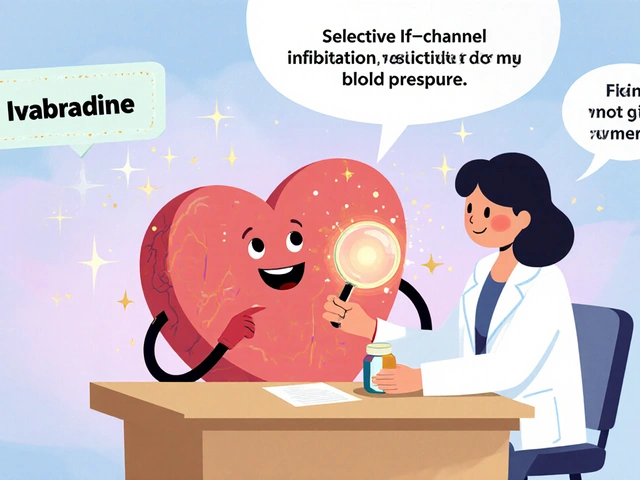Telemedicine: How to Use Online Care and Buy Meds Safely
Telemedicine makes seeing a doctor and getting prescriptions easier than ever. You can get a consult from your phone, upload photos, and receive a prescription sent to a pharmacy or shipped to your door. That convenience helps when you live far from care, are short on time, or need quick advice. But online care has pitfalls—bad pharmacies, counterfeit drugs, and unclear rules. This guide shows practical steps to get safe telehealth visits and reliable medication delivery.
Start by picking a reputable telemedicine service. Look for platforms that show clinician credentials, have clear pricing, and use secure messaging. Avoid sites that offer controlled drugs without a proper video visit or that pressure you to buy from a specific seller. A real clinician will ask about your history, review symptoms, and explain treatment options—not just sell a pill.
Getting a valid prescription online
During the visit, be ready with your medical history, current medicines, allergies, and a list of symptoms. If a prescription is appropriate, ask how it will be sent: to a local pharmacy, a national chain, or an online pharmacy. If they suggest an online pharmacy, ask for its name and check reviews and licensing. Legit pharmacies display a physical address and a pharmacy license number. If you’re asked to pay in cryptocurrency or gift cards, walk away.
Choosing a safe online pharmacy
Compare prices but don’t let cost be the only factor. Trusted sites often require a prescription and offer customer support. Watch for red flags: extremely low prices, no contact info, foreign addresses with no license details, or claims that no prescription is needed. If you plan to import drugs from another country, review customs rules first—some medicines are restricted or limited in quantity.
Shipping times and storage matter. Some meds need refrigeration or careful handling. Ask the pharmacy about their packaging and return policy. Track your package and inspect it on arrival. If tablets look different, have a strange odor, or packaging is tampered with, contact the pharmacy and your telemedicine clinician immediately.
Use telemedicine responsibly for follow-ups and minor issues. For serious symptoms—chest pain, sudden weakness, severe breathing trouble—call emergency services. Keep a list of your medications handy and schedule periodic follow-ups so clinicians can monitor side effects and interactions. Many telehealth visits now connect directly with local pharmacies, making refills smoother and safer.
Finally, protect your data. Use strong passwords, enable two-factor authentication on telehealth apps, and avoid public Wi‑Fi during consultations. Ask how your information is stored and who can access it. Good telemedicine should save you time and give safe access to prescriptions without risking your health or privacy.
If you’re unsure about a pharmacy or drug, call your clinician or pharmacist before ordering. Keep copies of prescriptions, invoices, and messages from the telemedicine service. Save photos of packages and pills. These records help resolve problems fast and protect you if a reorder or refund is needed. Small steps prevent big headaches later.
3
Top 9 Alternatives to ZipHealth.co You Should Consider in 2025
Exploring new and exciting alternatives to ZipHealth.co this year? Check out these nine platforms that are leading the charge in online healthcare. From targeted men's health solutions to comprehensive telemedicine platforms, we've got the details. Dive into their pros and cons to see which option fits your needs. Make an informed decision about your online health journey.
23
Top 6 Alternatives to Felixforyou.ca for Canadian Telemedicine
Explore six top alternatives to felixforyou.ca in 2024 for accessing online healthcare services in Canada. Discover platforms like Maple Health, Telus Health, and others that offer convenient virtual consultations, prescriptions, and wellness advice. Each alternative has unique benefits and some limitations, making it crucial to choose the right service for your needs. Whether seeking holistic health solutions or specific medical advice, Canadian residents can find a suitable option from these diverse telemedicine services.
Latest Posts
Popular Posts
-
 Medication-Induced Drowsiness: What Causes It and How to Manage It
Medication-Induced Drowsiness: What Causes It and How to Manage It
-
 Amyotrophic Lateral Sclerosis: How Riluzole Slows Neurodegeneration and Extends Life
Amyotrophic Lateral Sclerosis: How Riluzole Slows Neurodegeneration and Extends Life
-
 Chronic Pancreatitis: Managing Pain, Enzyme Therapy, and Nutrition
Chronic Pancreatitis: Managing Pain, Enzyme Therapy, and Nutrition
-
 Shift Work Sleep Disorder: How to Manage Night Shifts and Get Real Sleep
Shift Work Sleep Disorder: How to Manage Night Shifts and Get Real Sleep
-
 GLP-1 Side Effects: How to Manage Nausea, Dosing, and Realistic Expectations
GLP-1 Side Effects: How to Manage Nausea, Dosing, and Realistic Expectations




